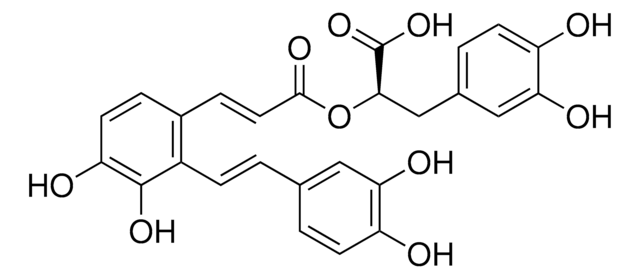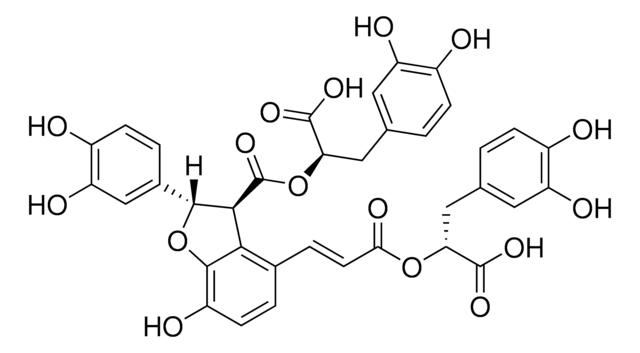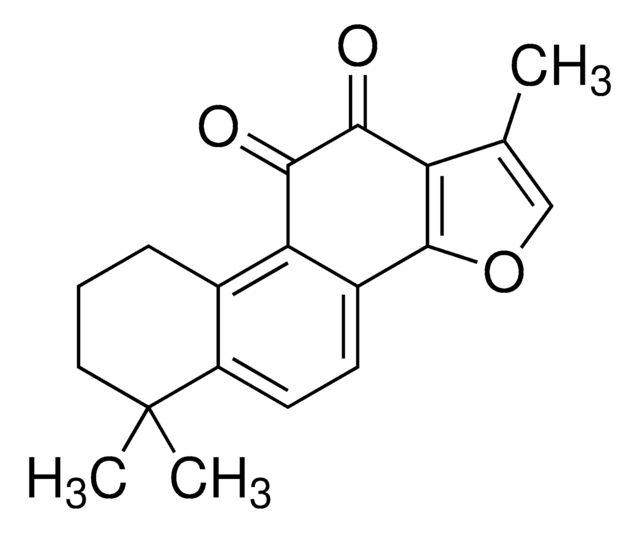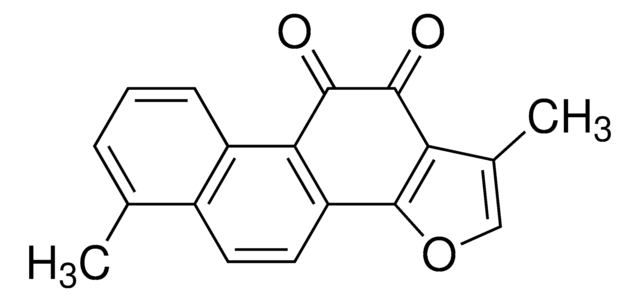Kluczowe dokumenty
SML0045
Salvianolic acid A hydrate
≥98% (HPLC)
Synonim(y):
Dan phenolic acid A hydrate
About This Item
Polecane produkty
Próba
≥98% (HPLC)
Formularz
powder
kolor
yellow
rozpuszczalność
H2O: ≥19 mg/mL
Warunki transportu
wet ice
temp. przechowywania
−20°C
ciąg SMILES
O.OC(=O)[C@@H](Cc1ccc(O)c(O)c1)OC(=O)\C=C\c2ccc(O)c(O)c2\C=C\c3ccc(O)c(O)c3
InChI
1S/C26H22O10.H2O/c27-18-7-2-14(11-21(18)30)1-6-17-16(4-9-20(29)25(17)33)5-10-24(32)36-23(26(34)35)13-15-3-8-19(28)22(31)12-15;/h1-12,23,27-31,33H,13H2,(H,34,35);1H2/b6-1+,10-5+;/t23-;/m1./s1
Klucz InChI
XFUSRNNWIRPEDG-FYLUTCCGSA-N
Zastosowanie
Salvianolic acid A hydrate has been used as rosmarinic acid derivative for the inhibition of DNA polymerase e in human cell lines.[1]
Działania biochem./fizjol.
Kod klasy składowania
13 - Non Combustible Solids
Klasa zagrożenia wodnego (WGK)
WGK 3
Temperatura zapłonu (°F)
Not applicable
Temperatura zapłonu (°C)
Not applicable
Wybierz jedną z najnowszych wersji:
Certyfikaty analizy (CoA)
Nie widzisz odpowiedniej wersji?
Jeśli potrzebujesz konkretnej wersji, możesz wyszukać konkretny certyfikat według numeru partii lub serii.
Masz już ten produkt?
Dokumenty związane z niedawno zakupionymi produktami zostały zamieszczone w Bibliotece dokumentów.
Klienci oglądali również te produkty
Active Filters
Nasz zespół naukowców ma doświadczenie we wszystkich obszarach badań, w tym w naukach przyrodniczych, materiałoznawstwie, syntezie chemicznej, chromatografii, analityce i wielu innych dziedzinach.
Skontaktuj się z zespołem ds. pomocy technicznej








